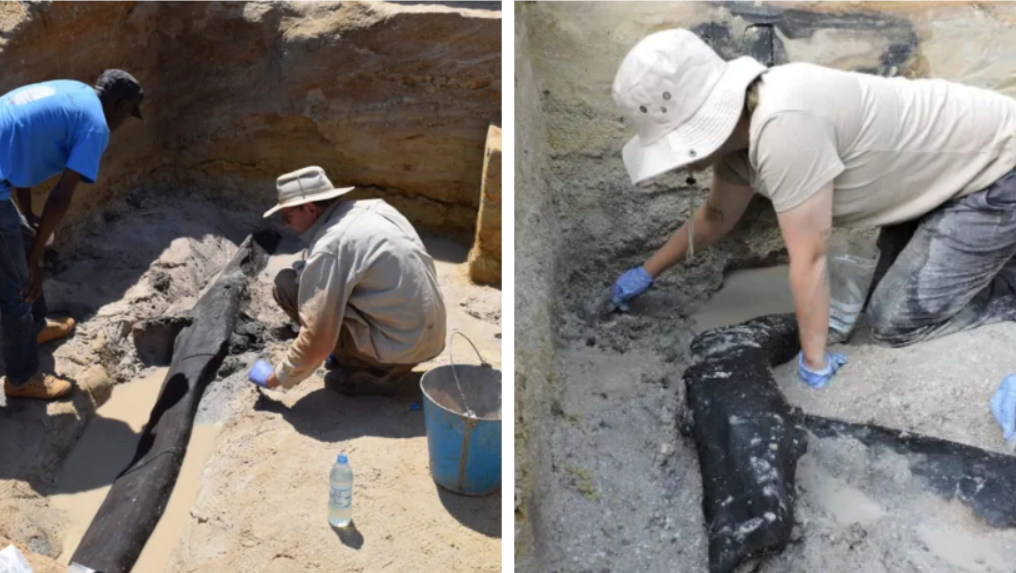Groundbreaking Discovery at Kalambo Falls Rewrites Understanding of Early Human Ingenuity
A wooden structure above a waterfall has changed our thinking of the Stone Age (Picture: Professor Larry Barham/UOL/SWNS)
A remarkable find at Zambia’s Kalambo Falls has revolutionized our understanding of the Early Stone Age, pushing the boundaries of what we believed about our ancestors' capabilities. Researchers from the University of Liverpool and Aberystwyth University unearthed the world's oldest known man-made wooden structures, dating back at least 476,000 years—predating Homo sapiens.
This discovery provides the earliest evidence of early humans deliberately shaping logs to construct complex structures, far surpassing the previous assumptions that early human use of wood was limited to simpler tools like spears or digging sticks. The well-preserved wooden remains, found due to the high water levels at Kalambo Falls, indicate that these early humans were more settled than previously thought, challenging the notion that Stone Age humans were strictly nomadic.
The structure could have been a platform, or possibly a dwelling (Picture: Professor Larry Barham/UOL/SWNS)
Professor Larry Barham, leader of the 'Deep Roots of Humanity' project at Liverpool University, remarked, “This discovery has profoundly changed my view of our early ancestors. It’s not just about survival; it’s about them using their intelligence and creativity to build their environment.”
The findings, featured in the journal Nature, suggest that these early humans constructed a platform or part of a dwelling, demonstrating advanced planning and craftsmanship. "They were not just survivors; they were innovators who manipulated their environment to make life more manageable," added Barham.
Aberystwyth University's Professor Geoff Duller, who helped date the find using advanced luminescence techniques, noted, "This technique allows us to push back the dates we can confirm, offering a more detailed picture of early human evolution."
The Kalambo Falls site, located on the Zambia-Tanzania border near Lake Tanganyika, is under consideration for UNESCO World Heritage status due to its significant archaeological potential, underscored by these latest findings.
This transformative discovery not only places the Kalambo Falls site in a new light but also enhances its importance as a key heritage site, promising more insights into the origins of human technology and settlement.







